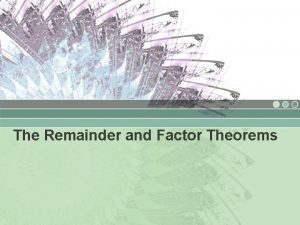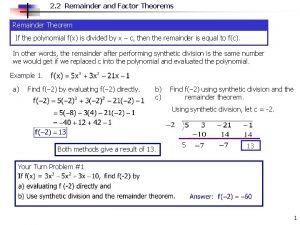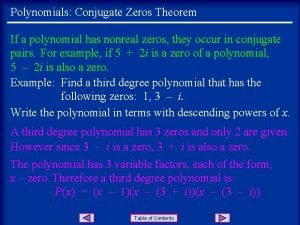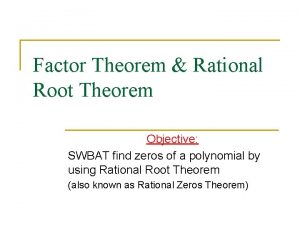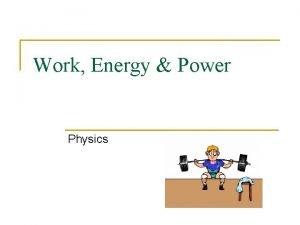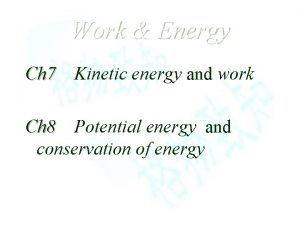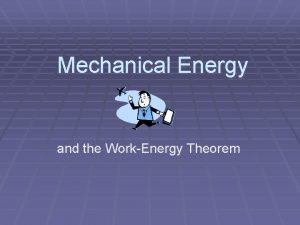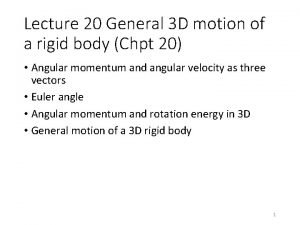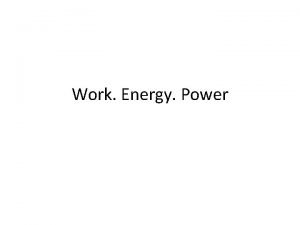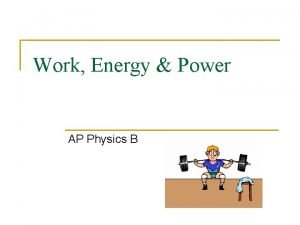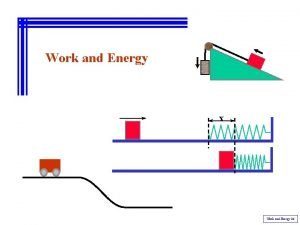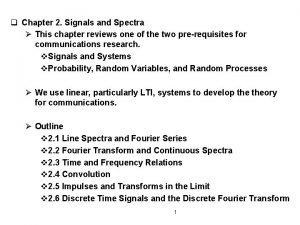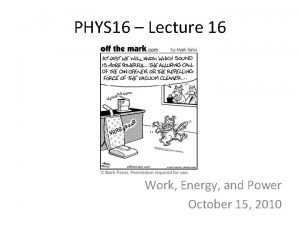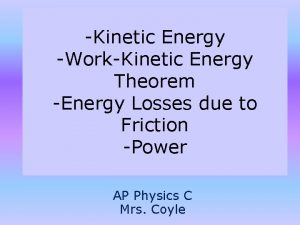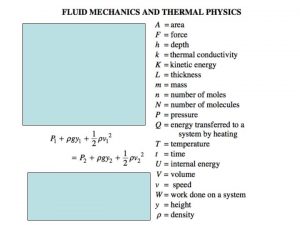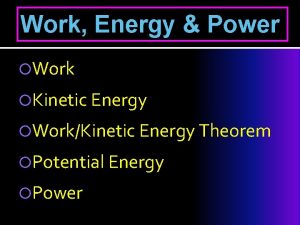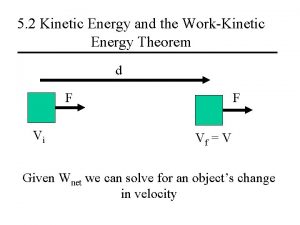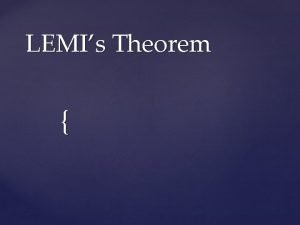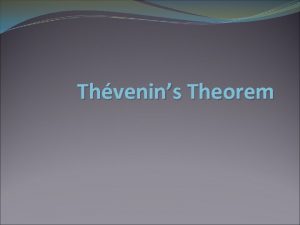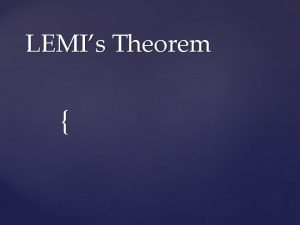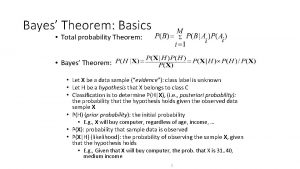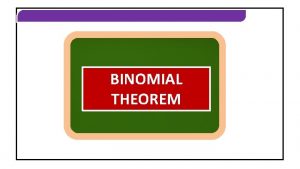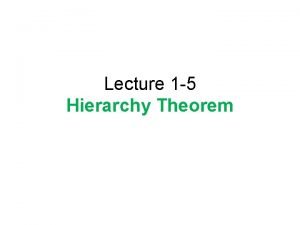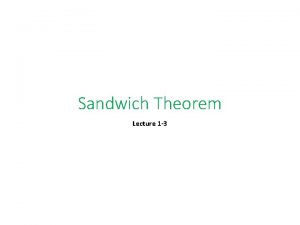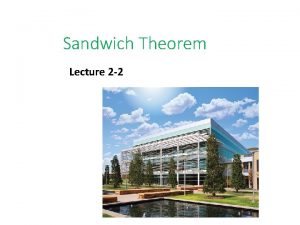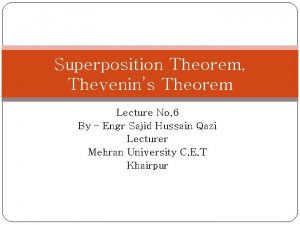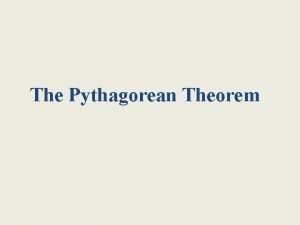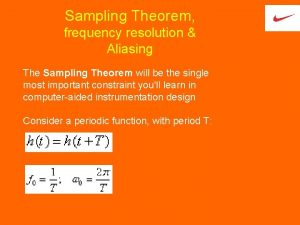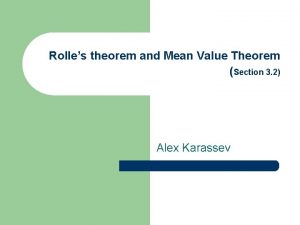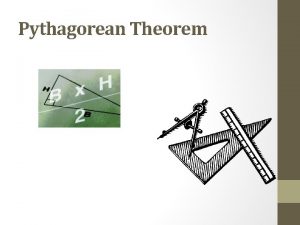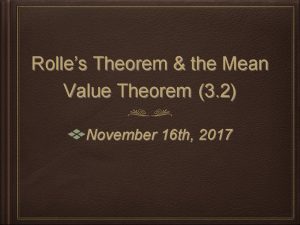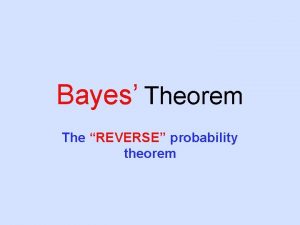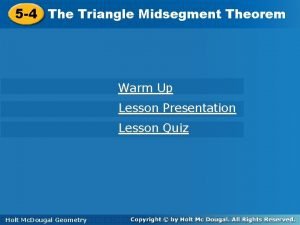Lecture 12 Ch 7 WorkKinetic Energy Theorem University





























- Slides: 29

Lecture 12 Ch 7. Work-Kinetic Energy Theorem University Physics: Mechanics Dr. -Ing. Erwin Sitompul http: //zitompul. wordpress. com 2012

Energy § Energy is a number associated with the state (or condition) of a system of one or more objects. § If a force changes one of the objects by making it move, then the energy number is said to be change. § After countless experiments, scientists and engineers realized that energy numbers can be assigned to or withdrawn from a system by conducting a certain scheme. § If planned carefully, the outcomes of the experiments can be predicted and made useful. For example: flying machine, refrigerator, etc. Erwin Sitompul University Physics: Mechanics 12/2

Conservation of Energy § Energy can be transformed from one type to another and transferred from one object to another, but the total amount is always the same. Thus, energy is conserved. Erwin Sitompul University Physics: Mechanics 12/3

Kinetic Energy § Kinetic energy K is energy associated with the state of motion of an object. § The faster the object moves, the greater is its kinetic energy. When the object is stationary, its kinetic energy is zero. § For an object of mass m whose speed v is well below the speed of light, (kinetic energy) § The SI unit of kinetic energy (and every other type of energy) is joule (J), defined as: Erwin Sitompul University Physics: Mechanics 12/4

Example: Locomotives Crash In 1896 in Texas, two locomotives were deliberately crashed frontally to each other for a publicity stunt in front of 40, 000 spectators. They are parked at opposite ends of a 6. 4 -km-long track before fired up, and crashed at full speed. Hundreds of people were hurt by flying debris, several were killed. Assuming each locomotive weighed 1. 2× 106 N and its acceleration was a constant 0. 26 m/s 2, what was the total kinetic energy of the two locomotives just before the collision? Erwin Sitompul University Physics: Mechanics 12/5

Example: Locomotives Crash 6400 m Erwin Sitompul University Physics: Mechanics 12/6

Work § Work W is energy transferred to or from an object by means of a force acting on the object. § Energy transferred to the object is positive work, and energy transferred from the object is negative work. § Work has the same unit as energy, Joule, and is a scalar quantity. Erwin Sitompul University Physics: Mechanics 12/7

Work and Kinetic Energy § The work a force does on an object can be calculated as the object moves through some displacement. § Only the force component along the object’s displacement will be used. § The force component perpendicular to the displacement does zero work. (work done by a constant force) § We can also write in scalar (dot) product as: (work done by a constant force) Erwin Sitompul University Physics: Mechanics 12/8

Work and Kinetic Energy § Assumptions must be taken to use these formulas to calculate work done on an object by a force. § The force must be a constant force, not change in magnitude or direction § The object must be particle-like and rigid § The SI unit of work is joule (J), defined as: Erwin Sitompul University Physics: Mechanics 12/9

Flashback: Multiplying Vectors The Scalar Product → → →→ § The scalar product of the vector a and b is written as a·b and defined to be: →→ § Because of the notation, a·b is also known as the dot product and is spoken as “a dot b. ” → → § If a is perpendicular to b, means Φ = 90°, then the dot product is equal to zero. → → § If a is parallel to b, means Φ = 0, then the dot product is equal to ab. Erwin Sitompul University Physics: Mechanics 12/10

Flashback: Multiplying Vectors § The dot product can be regarded as the product of the magnitude of the first vector and the projection magnitude of the second vector on the first vector Erwin Sitompul University Physics: Mechanics 12/11

Flashback: Multiplying Vectors § When two vectors are in unit vector notation, their dot product can be written as Erwin Sitompul University Physics: Mechanics 12/12

Flashback: Multiplying Vectors → ^ ^ What is the angle Φ between a = 3 i – 4 j and b = – 2 i + 3 k ? Solution: Erwin Sitompul University Physics: Mechanics 12/13

Example: Calculating Work → Calculate the work done by→F along the direction of displacement Δs, as shown on the next figure. Erwin Sitompul University Physics: Mechanics 12/14

Work-Kinetic Energy Theorem § These statements are known traditionally as the work-kinetic energy theorem for particles. § They hold for both positive and negative work. If the net work done on a particle is positive, then the particle’s kinetic energy increases by the amount of that work. And so as the opposite case. Erwin Sitompul University Physics: Mechanics 12/15

Example: Industrial Spies Two industrial spies are → sliding an initially stationary 225 kg floor safe a displacement d of magnitude 8. 5 m, straight toward their truck. → The push F 1 of spy 001 is 12 N, directed→ at an angle of 30° downward from the horizontal; the pull F 2 of spy 002 is 10 N, directed at 40° above the horizontal. Erwin Sitompul University Physics: Mechanics 12/16

Example: Industrial Spies → → (a) What is the net work done → on the safe by forces F 1 and F 2 during the displacement d? F 1 = 12 N, F 2 = 10 N Erwin Sitompul University Physics: Mechanics 12/17

Example: Industrial Spies (b) During the displacement, what →is the work Wg done on the safe by the gravitational force Fg and what is the work WN → done on the safe by the normal force FN from the floor? • The forces are perpendicular to the displacement of the safe • They do zero work on the safe and do not transfer any energy to or from it. Erwin Sitompul University Physics: Mechanics 12/18

Example: Industrial Spies (c) The safe is initially stationary. What is its speed vf at the end of the 8. 5 m displacement? Erwin Sitompul University Physics: Mechanics 12/19

Example: Crate of Crepe During a storm, a crate of crepe is sliding across a slick, oily → parking lot through a displacement d = – 3 ^i →m while a steady wind pushes against the crate with a force F = 2 ^i – 6 ^j N. The situation and coordinate axes are shown on the next figure. (a) How much work does this force do on the crate during the displacement? • The force does a negative 6 J of work on the crate • Other way stated, the force transfers 6 J of energy out from the kinetic energy of the crate Erwin Sitompul University Physics: Mechanics 12/20

Example: Crate of Crepe During a storm, a crate of crepe is sliding across a slick, oily → ^i while a steady parking lot through a displacement d = – 3 m → wind pushes against the crate with a force F = 2 ^i – 6 ^j N. The situation and coordinate axes are shown on the next figure. (b) If the crate has a kinetic energy of 10 J at the beginning of displacement d, what is its kinetic energy at the end of d? Erwin Sitompul University Physics: Mechanics 12/21

Work Done by the Gravitational Force § The figure shows a particle-like tomato of mass m that is thrown upward with initial speed v 0 and thus with initial kinetic energy Ki = 1/2 mv 02. § As the tomato rises, → it is slowed by a gravitational force Fg; that is, the tomato’s → kinetic energy decreases because Fg does work on the tomato as it rises. → § The work Wg during displacement d done by → the gravitational force Fg is (work done by gravitational force) • During the object’s rise, the gravitational force acting on the object transfer energy in the amount mgd from the kinetic energy of the object. • What happens when the tomato falls back down? Erwin Sitompul University Physics: Mechanics 12/22

Work Done in Lifting and Lowering an Object § Now suppose we lift a particle-like object by applying a vertical force → F to it. § During the upward displacement, our applied force does positive work Wa on the object while the gravitational force does negative work Wg on it. § In one common situation, the object is stationary before and after the lift, that means • Raising • Lowering • Raising, f = 180°, Wa > 0, work is exerted • Lowering, f = 0°, Wa < 0, work is received Erwin Sitompul University Physics: Mechanics 12/23

Work Done in Lifting and Lowering an Object An initially stationary 15. 0 kg crate of cheese wheels is pulled, via a cable, a distance d = 5. 70 m up a frictionless ramp to a height h of 2. 50 m, where it stops. (a) How much work Wg is done on the crate by the gravitational force Fg during the lift? Erwin Sitompul University Physics: Mechanics 12/24

Work Done in Lifting and Lowering an Object An initially stationary 15. 0 kg crate of cheese wheels is pulled, via a cable, a distance d = 5. 70 m up a frictionless ramp to a height h of 2. 50 m, where it stops. (b) How much work WT is done on the crate by the force T from the cable during the lift? Erwin Sitompul University Physics: Mechanics 12/25

Work Done in Lifting and Lowering an Object An elevator cab of mass m = 500 kg is descending with speed vi = 4. 0 m/s when its supporting cable begins to slip, →allowing it to fall with constant → acceleration a = g/5. (a) During the fall through a distance d = 12 m, what is the work Wg done on the cab by the gravitational force Fg? (b) During the 12 m fall, what is the work WT done on the cab by the upward pull T of the elevator cable? Erwin Sitompul University Physics: Mechanics 12/26

Work Done in Lifting and Lowering an Object An elevator cab of mass m = 500 kg is descending with speed vi = 4. 0 m/s when its supporting cable begins to slip, →allowing it to fall with constant → acceleration a = g/5. (c) What is the net work W done on the cab during the fall? (d) What is the cab’s kinetic energy at the end of the 12 m fall? Erwin Sitompul University Physics: Mechanics 12/27

Exercise Problems 1. A skier with a mass of 58 kg slides downhill a surface with 25° inclination. Her initial velocity is 3. 6 m/s. If she experiences a friction force of 70 N, determine her velocity 57 m further by using work-kinetic energy theorem. Answer: vf = 18. 64 m/s. 2. An 8. 0 -kg object is moving in the positive direction of an x axis. When it passes through x = 0, a constant force directed along the axis begins to act on it. The next figure gives its kinetic energy K versus position x as it moves from x = 0 to x = 5 m. K 0 = 30 J. The forces continues to act. What is v when the object moves back through x = – 3 m? Hint: Use work-kinetic energy theorem. Answer: 3. 46 m/s. Erwin Sitompul University Physics: Mechanics 12/28

End of the Lecture Erwin Sitompul University Physics: Mechanics 12/29
 Stokes theorem and green's theorem
Stokes theorem and green's theorem 01:640:244 lecture notes - lecture 15: plat, idah, farad
01:640:244 lecture notes - lecture 15: plat, idah, farad Energy energy transfer and general energy analysis
Energy energy transfer and general energy analysis Energy energy transfer and general energy analysis
Energy energy transfer and general energy analysis Utilities and energy lecture
Utilities and energy lecture Remainder theorem class 9
Remainder theorem class 9 Remainder theorem class 9
Remainder theorem class 9 Factor theorem and remainder theorem
Factor theorem and remainder theorem Conjugate zeros theorem
Conjugate zeros theorem Rational zero theorm
Rational zero theorm Linear factors theorem and conjugate zeros theorem
Linear factors theorem and conjugate zeros theorem Conservation of mechanical energy theorem
Conservation of mechanical energy theorem How many types of energy are there?
How many types of energy are there? Work energy theorem
Work energy theorem Conservation definition
Conservation definition Work-energy equation
Work-energy equation Work energy theorem
Work energy theorem Mechanical energy theorem
Mechanical energy theorem Konig theorem kinetic energy
Konig theorem kinetic energy Power and work
Power and work Work energy theorem
Work energy theorem Ap physics energy
Ap physics energy Matthew pulls his little sister sarah in a sled
Matthew pulls his little sister sarah in a sled The nature of energy
The nature of energy Line spectrum in signals and systems
Line spectrum in signals and systems Work energy theorem
Work energy theorem Work energy theorem for a variable force class 11
Work energy theorem for a variable force class 11 沈榮麟
沈榮麟 Section 1 work and machines section 2 describing energy
Section 1 work and machines section 2 describing energy Spring kinetic energy formula
Spring kinetic energy formula





